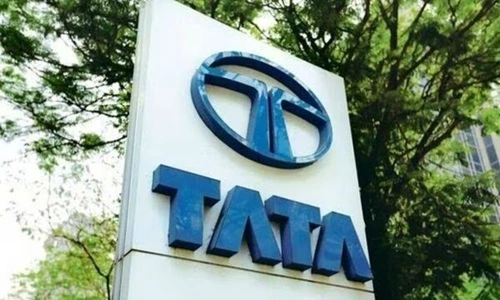Few corporate entities in the world command the respect, admiration, and scale that the Tata Group enjoys. Founded in 1868 by Jamsetji Tata, the conglomerate has grown to become a symbol of integrity, philanthropy, innovation, and industrial leadership. As of 2025, Tata Group operates in over 100 countries across six continents, with more than 100 operating companies under its fold, including Tata Motors, Tata Consultancy Services (TCS), Tata Steel, Tata Power, Tata Chemicals, Titan, Tata Consumer Products, and Air India.
The Group’s total revenue crossed ₹11.5 lakh crore (approx. $140 billion) in FY24, making it India’s largest and most diversified business house. It is not only a titan in India’s industrial landscape but also a globally recognized name across sectors ranging from IT and automobiles to aerospace, hospitality, retail, and clean energy.
Under the visionary leadership of N. Chandrasekaran, Tata Group is undergoing a digital and sustainability-focused transformation, emphasizing synergies across businesses, customer-centricity, and global competitiveness.
This SWOT analysis explores the Group’s strengths, weaknesses, opportunities, and threats, showcasing how the Tata Group remains the vanguard of India’s business ambitions in the 21st century.

Strengths: The Pillars of Tata Group’s Global Leadership
1. Strong Brand Equity and Public Trust
The Tata name is synonymous with ethics, reliability, and national pride. According to the 2024 Brand Finance Report, Tata remains the most valuable Indian brand This trust translates into customer loyalty and a high reputation among stakeholders and investors.
2. Diverse Business Portfolio
Tata Group operates across industries such as IT (TCS), automotive (Tata Motors, Jaguar Land Rover), steel, power, hospitality (IHCL), consumer goods (Tata Consumer), and aviation (Air India). This diversification mitigates sector-specific risks and provides cross-industry leverage.
3. Global Footprint with Indian Roots
From TCS’s global IT services to Jaguar Land Rover in the UK, and branded hotels across the world, the Group balances global ambitions with strong domestic roots. Tata’s international revenues contribute significantly to the Group’s top line.
4. Leadership in Technology and Innovation
TCS, India’s largest IT services company, remains a global leader in digital transformation, cloud, and AI. Meanwhile, Tata Digital, Tata Neu, and Tata Electronics showcase the Group’s commitment to digital-first innovation.
5. Sustainability and ESG Leadership
Tata is spearheading India’s green energy transition. Tata Power, Tata Chemicals, and Tata Steel are investing heavily in renewables, green hydrogen, circular economy, and carbon neutrality, aligning with global ESG benchmarks.
Weaknesses: Challenges Within the Conglomerate
1. Complex Holding Structure
Tata Group operates through multiple listed and unlisted companies, which can lead to duplication, inefficiencies, and difficulty in synergy realization. The absence of a unified holding company complicates strategic execution and investor visibility.
2. Turnaround Burden of Air India
While the acquisition of Air India is a bold strategic move, the airline faces legacy issues like debt, employee restructuring, and operational inefficiencies. Reviving it to profitability is a long-term challenge despite early improvements.
3. Inconsistent Profitability Across Businesses
While TCS, Tata Motors (especially JLR), and Titan are highly profitable, several businesses—like Tata Steel Europe and Air India—continue to drag down overall margins due to volatility and legacy costs.
4. Capital-Intensive Businesses
Many of Tata’s core businesses like steel, automotive, aviation, and energy are capital-heavy and cyclical in nature, requiring consistent investments and vulnerable to global economic fluctuations.
Opportunities: Growth Catalysts for the Future
1. Electric Vehicles and Clean Mobility
Tata Motors is India’s leading EV player, with models like Nexon EV and Tiago EV dominating the market. With growing EV adoption and government incentives, Tata is set to deepen its EV ecosystem—from batteries to charging infrastructure.
2. Digital and Consumer Business Expansion
The Group is betting big on Tata Digital and its super-app Tata Neu, which integrates services from BigBasket, 1mg, Croma, and more. India’s booming e-commerce and D2C market present massive upsides for this venture.
3. Green Energy and Climate Leadership
Tata Power aims to add 20GW of renewable energy capacity by 2030. Tata Chemicals is also exploring green hydrogen and sustainable materials, aligning with India’s Net Zero targets.
4. Defence and Aerospace
Through Tata Advanced Systems, the Group is building drones, fighter aircraft components, and missile systems for India’s growing defence needs. The government’s Make in India and Atmanirbhar Bharat initiatives create strong tailwinds.
5. Global Collaborations and Strategic M&A
Tata’s strategic tie-ups—like Tata Electronics’ chip packaging ambitions or collaborations with Airbus and Boeing—position it as a player in the next wave of global manufacturing and tech supply chains.
Threats: External Risks and Market Pressures
1. Global Macroeconomic Volatility
With significant exposure to global markets (especially for TCS and JLR), the Tata Group is vulnerable to global slowdowns, geopolitical tensions, and currency fluctuations.
2. Intensifying Competition Across Sectors
Whether it’s EVs (vs. Hyundai, MG, BYD), IT services (vs. Accenture, Infosys), or e-commerce (vs. Amazon, Reliance JioMart), Tata faces agile domestic and international rivals in nearly every sector.
3. Geopolitical Risks and Supply Chain Disruptions
Tata Steel Europe and JLR remain exposed to regulatory risks, Brexit-related issues, energy crises, and supply chain bottlenecks, which can impact performance and investor sentiment.
4. ESG Compliance and Climate Accountability
Although Tata leads in ESG efforts, regulatory frameworks and stakeholder expectations on climate disclosures, human rights, and ethical sourcing are becoming stricter, demanding continual transparency and action.
Conclusion: Tata Group – Building a Future-Ready, Purpose-Driven India
In 2025, the Tata Group remains a beacon of Indian enterprise and global ambition. Its balanced blend of legacy and future-readiness, ethics and innovation, scale and agility, makes it a unique corporate entity not just in India, but worldwide.
As a SWOT analyst and content creator from India, it is evident that Tata Group’s strengths—especially brand trust, diversification, digital push, and sustainability focus—far outweigh its manageable internal complexities and external threats. It is not merely adapting to change; it is shaping the future—for India and for the world.
With bold leadership, strategic clarity, and unwavering values, Tata Group continues to “lead with trust,” as it unlocks the next chapters of growth, impact, and nation-building.

Meet Suhas Harshe, a financial advisor committed to assisting people and businesses in confidently understanding and managing the complexities of the financial world. Suhas has shared his knowledge on various topics like business, investment strategies, optimizing taxes, and promoting financial well-being through articles in InvestmentDose.com

